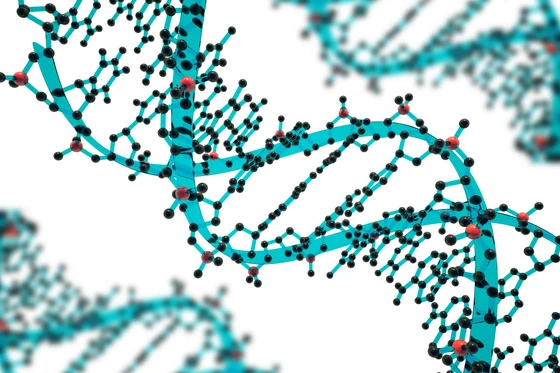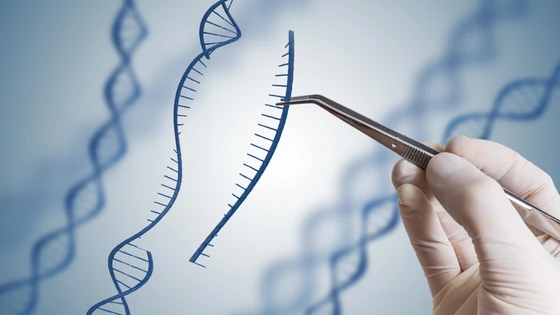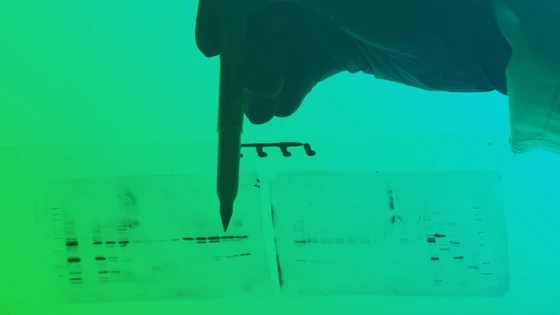Contents
CRISPR's popularity is soaring, but researchers know that undertaking genome editing experiments is not an easy task. In our Benchmark Report blog series, we report our survey findings around the challenges that researchers face while performing a CRISPR experiment. We cover every step of the CRISPR workflow in our blog series and offer tips for success.
In this blog post, we will focus on analysis. The primary quantitative measure of success in a CRISPR experiment is the average editing efficiency (indel frequency). What we will cover is an overview of why analysis matters and how other people are analyzing their CRISPR experiments, how to analyze a CRISPR experiment, and an introduction to our very easy-to-use and completely free analysis software called Inference of CRISPR Edits (ICE).
Why is CRISPR Analysis Important?
In the workflow above, we see that the analysis step is after we have transfected and edited our cells to create a pool of cells. This is a critical junction in the editing workflow. It is really important to confirm that editing has actually worked because this will have a drastic influence on whether or not you can use that pool directly, potentially, or if you do need to make single-cell clones of that pool, how many coins you actually need to leverage and how much work is going to be involved in that? Maybe it's more worthwhile to go back and reoptimize that transfection to get a higher editing efficiency in that pool.
How Do CRISPR Researchers Analyze?
According to the Benchmark Report, about 48% are not using any methodology to look at how their experiment has actually worked. This is terrifying because as mentioned previously, this is a very important junction at which you have to make a lot of key decisions. Do I keep moving with this workflow and invest potentially a month or more of time isolating single subclones and hundreds of thousands of pipette tips as I'll cover in the next section, or should I restart this process, spend another week or two optimizing, and see if I can get a much higher editing efficiency? It is a very, very clear junction that you should be checking for your editing efficiency.
The other thing that popped out of the benchmark report was how much time people were spending on analysis. Researchers reported that it took them about 14 hours of hands-on time to analyze their CRISPR edits. This is an inordinate amount of time, and this was actually the second-highest category after the transfection optimization step. People are spending a lot of time analyzing these edits and that may explain why so many people aren't analyzing them because they think that it's just too hard.
Methods Used For Analyzing CRISPR Edits
There are different methodologies for analyzing these CRISPR edits. The first methodology that really was used in the CRISPR field was T71 or surveyor assay, also called mismatch repair. In these assays, if you have a CRISPR break and that causes non-homologous end joining and differences between the two DNA strands with insertions or deletions created by that repair mechanism, then when you PCR-amplify that, you are going to get differences in the way these two strands can anneal together. The mismatch repair assay can leverage this discrepancy because if there is a mismatch you will get heteroduplexes. There is a class of enzymes such as the T7 nuclease that if they see a pair that isn't completely dimerized, they will cleave it. We can resolve this cleavage on an agarose gel, where if a population of cells has been edited, you will see a number of bands, meaning that there was cleavage that occurred. If there was no editing, then you'll have one band because there is no cleavage that occurred due to mismatches.
Another way of looking at CRISPR edits is a very quantitative methodology. This is sometimes called Amplicon seq, where we PCR amplify around the editing site and then send that amplicon for next-generation sequencing to be able to sequence every single piece of DNA and determine the editing efficiency based on how many DNA strands were impacted. Now, these are two of the more common types of analyzing your editing efficiency. How do they compare with each other? Luckily, there's a report that came out at the beginning of last year that compared next-generation sequencing with the T71 or surveyor assays. What you can see from the graph is the same population of cells just assayed with either next-generation sequencing or the T71 assay (each one of these data points corresponds to one target).
What you can see is that the NGS generally gives you higher results. This is a known fact that T71 often underrepresents your editing efficiency, which would be fine if that under-representation was consistent, and what you can see from this data is that it is definitely not. And what we would want in an assay is something that is accurate and can actually predict the editing efficiency we are having. And for the T71, unfortunately, this is not an assay that we recommend purely because it has absolutely no predictive value, as seen in these very stark examples.
Analysis Tool: Inference of CRISPR Edits
You can see how your choice of assay can really impact the quality of the data that you are going to get. We highly recommend using an analysis methodology that will actually give you an accurate result. So, is the answer to do next-generation sequencing on all of your edits? Well, hopefully not, because not everybody has access to next-generation sequencing and it can become a very costly experiment. Even though the price of sequencing is coming down, it's still not accessible enough to be able to run hundreds of samples, if that's what you need to do.
We, at Synthego, have developed a different analysis program, called Inference of CRISPR Edits (ICE), based on Sanger sequencing. And while this is a lower read, it still gives us a very similar quality of data to NGS as long as that editing efficiency is high enough. Obviously, Sanger has a much higher noise threshold, so if your editing efficiency is very low, then you are going to always get a low editing efficiency regardless of if you're doing Sanger or NGS, and we would highly recommend redoing that experiment in that case anyway.
ICE allows you to input that Sanger sequencing raw data, usually in the form of an AB1 file, and it deconvolutes Sanger sequencing trace to determine the kinds of editing efficiencies that are present in your sample. Plus, it is completely free to use for the scientific community. ICE has an automated smart analysis setting so that you don't have to know the right settings to pick, as well as it can export publication-quality images. And there has already been quite a larger number of publications that feature the ICE tool to determine their editing efficiency.
ICE can be used for a number of things, including gene knockouts. We can leverage it for multi-guide edits where we use up to three guides within a similar area of that edit, and we have just turned on a homology-directed repair analysis in the last year or so where you can also analyze your HDR edits for small knock-ins. But remember that we are limited by the length that Sanger sequencing is able to sequence. Check out our step-by-step guide for ICE analysis for further details.
I hope I have shown you that analysis is critical in the editing workflow. This is a pivotal time point at which the subsequent steps depend on identifying the editing efficiency at the pool. And this is important not just for knockouts, but even more importantly for knock-ins where your efficiency is always going to be lower. One technique that we recommend is to use Sanger sequencing and ICE analysis because this is an easy, sensitive, and cost-effective method to analyze your CRISPR edits.
In subsequent posts, we will cover single-cell cloning and give you some insight as to how to make this process better. Need more guidance for your experiments? Check out our resources section for more helpful CRISPR materials.







